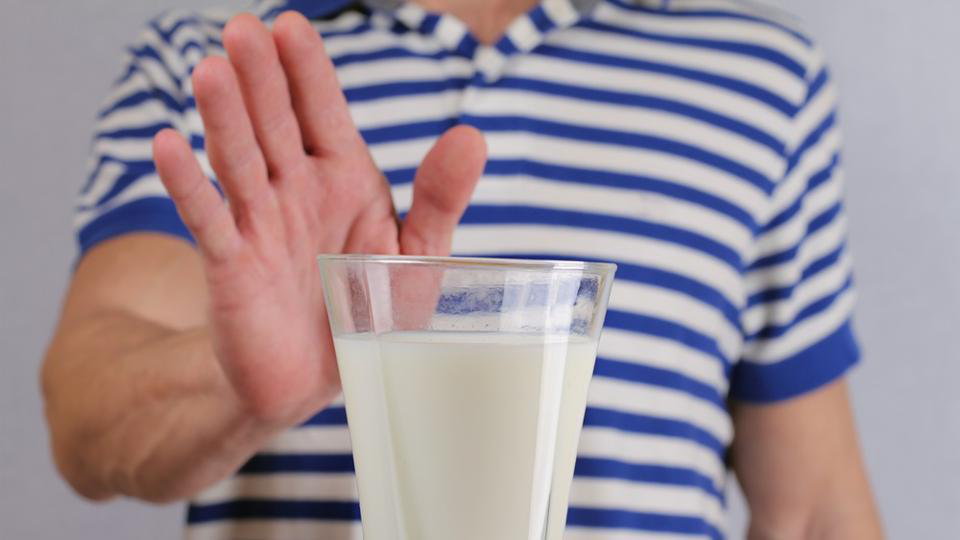


Those who are lactose intolerant can’t fully digest the lactose, or sugar found in milk. Because of this they will often have bloating, gas and diarrhea after they drink or eat dairy products. This is also called lactose malabsorption, and it tends to be harmless but uncomfortable. But do you know why you have lactose intolerance?

When your small intestine doesn’t produce enough lactase, the enzyme that digests lactose (the sugar in milk), you become lactose intolerant. When lactase is working normally, it turns milk sugar into galactose and glucose, which are easily absorbed into the bloodstream. If you don’t digest lactose well, your food will go directly to the colon without being processed. Here, undigested lactose and normal bacteria interact which causes the symptoms of lactose intolerance such as gas or diarrhea.
There are three main types of lactose intolerance:
Primary Lactose Intolerance
What causes lactose intolerance? This is the most common type of intolerance. In this instance, people start as newborns with enough lactase to digest their milk. As they grow, their lactase production decreases, but remains enough to allow normal dairy consumption and digestion.
With this type of intolerance, the production of lactase falls off quickly in adulthood. It is genetic and more common with those of Hispanic, Asian or African-American descent. It can also be common with those of Southern European or Mediterranean descent.
Secondary Lactose Intolerance
Your small intestine can decrease lactase production after injury or illness, causing secondary lactose intolerance. Some diseases that cause secondary lactose intolerance include Crohn’s disease, bacterial overgrowth, or celiac disease. With proper treatment, lactase levels can be improved. What causes lactose intolerance? May this type of lactose intolerance is the cause.
Developmental or Congenital Lactose Intolerance
It is rare, but possible for babies to have lactose intolerance right from the start. This is generally passed through the generations in an autosomal recessive manner, meaning it must come from both parents, for a child to be lactose intolerant.
Risk Factors
Some factors make your child or you more likely to be lactose intolerant, such as:
Ethnicity:
Those who are of American Indian, Hispanic, Asian, or African descent are more likely to be lactose intolerant.
Increased Age:
Lactose intolerance is uncommon in babies but more common in adults.
Premature Birth:
Babies born early may have less lactase because their small intestine isn’t fully developed.
Some Cancer Treatments:
Chemotherapy and radiation can increase a person’s risk for lactose intolerance.
Small intestine diseases:
What causes lactose intolerance? Crohn’s, celiac disease or bacterial overgrowth can all contribute to lactose intolerance.
Dairy Allergy or Lactose Intolerance?
It’s important to note that a dairy allergy and lactose intolerance are not the same thing. They are often confused. If you have an allergy, you are allergic to some proteins in dairy products and milk. It can be life-threatening.
Lactose intolerance has less severe symptoms than a dairy allergy. Those who are allergic must avoid drinks and foods with dairy products or milk. If you’re intolerant, you can still have some dairy in small amounts. It will vary from person to person, but lactose intolerance doesn’t have life-threatening reactions.
Food avoidance is one of the best ways for a person with lactose intolerance to seek treatment. Some consider lactose intolerance to be only natural since the only mammals that consume milk and dairy products after weaning are humans. If an underlying treatment is the root cause of lactose intolerance, treatment should be sought.
It may be a little trial and error to avoid lactose, labeling your food can help. To determine what is causing the intolerance, it recommends going without milk or dairy for two weeks. At this point, introducing very small amounts back into the diet, to see what can be tolerated, can be done. Those who are intolerant should still be able to enjoy about 12 lactose grams a day.
Avoid these Foods
Most milk products have lactose, and a lot of processed foods have dairy products in them. Products with dry milk, curds, whey, milk by-products, lactose and milk will have lactose in them.
Some common trouble makers are:
Check food labels for hidden lactose, such as:
Please note, if you have a severe lactose intolerance, you should tell your pharmacist to be sure your medication doesn’t have any lactose. A lactose intolerant mother may safely nurse their child.
Alternatives to Dairy
There are many alternatives to milk such as soy milk, coconut, almond or flax milk. Many stores also have lactose-free alternatives available.
In many areas, dairy supplies vitamin B12, vitamin A and D as well as protein and calcium. Without replacing with other nutrient rich sources, malnutrition can occur. Some optional alternatives include:
You can get vitamin A from broccoli, pumpkin, liver, cod liver oil, carrots, spinach, peas, egg, mango, melon, apricot and papaya. For calcium try substituting seeds, nuts, beans, figs, blackstrap molasses, okra, kale, seaweed, oranges, broccoli, amaranth, quinoa, dandelion leaves and fortified foods. For vitamin D, spend some more time in the sun, eat eggs, fatty fish, fish liver oil and some fortified products.
Many enjoy lactose-free milk, but if you have severe symptoms make sure there is zero lactose in your product. You may need to add more protein if you aren’t getting any dairy.
Many people can enjoy some dairy without trouble, such as 12 grams or a glass of milk a day. It is best to spread this out throughout the day to minimize the digestion work.
If you are struggling, speaking with your doctor or a dietician can help you to have less trouble with your lactose intolerance.